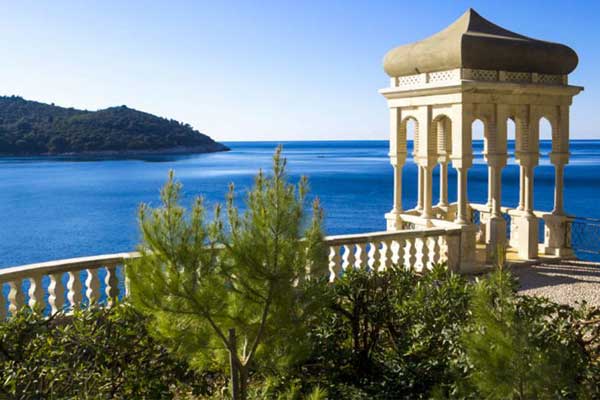Visit Croatia
 Croatia is a country of a thousand islands, located in Southeast Europe. It is rich in natural beauty, culture and tradition. Every nation likes its land and calls it the most beautiful. Croats call their land (“Our Beautiful One”), which is also the title of the national anthem. Croatia has created its own spirit and today, with full force, participates in European science and culture. The hospitality of people, affordable prices, warm, clean and blue sea, beautiful towns, idyllic villages are a pleasure for every human being. Unforgettable beautiful national parks, sunshine, excellent and tasty food and drinks, entertainment, all of this is worth visiting in Croatia.
Croatia is a country of a thousand islands, located in Southeast Europe. It is rich in natural beauty, culture and tradition. Every nation likes its land and calls it the most beautiful. Croats call their land (“Our Beautiful One”), which is also the title of the national anthem. Croatia has created its own spirit and today, with full force, participates in European science and culture. The hospitality of people, affordable prices, warm, clean and blue sea, beautiful towns, idyllic villages are a pleasure for every human being. Unforgettable beautiful national parks, sunshine, excellent and tasty food and drinks, entertainment, all of this is worth visiting in Croatia.
Did you know? In 1906, a Croat named S. Eduard Penkal invented and patented the first pen. The word tie is a Croatian invention, when a Croat in the 17th century used to wear around a neck a piece of merchandise as a fashion detail. Around the Pula Arenas is a knot of the largest tie in the world. Namely, the length is 808 meters, and the largest width of the lower part of the necktie is 25 meters
- Fun Facts
- Culture & Tradition
- Food & Drinks
- Nature
- In the center of Istria there is a small town called Hum, which is only about 100 meters long and 30 meters wide. But believe it or not, in such a small dimension there is a rich history. The legend says that this place was created thanks to the giants who built cities in the river valley. When we talk about small towns in the world, we mainly refer to cities with up to 30,000 inhabitants, and this beautiful small town has only about 20 permanent residents.
- For all tourists and visitors in general, one wish is the same – sunny and nice weather. Most of the factors in tourism can be affected, but on time (un) opportunities absolutely not. Fortunately, Central Dalmatia is one of the sunniest regions of Europe. We count more sunny hours from Sydney – as many as 2715!
- Croatia can boast of numerous unusual Guinness recordings, such as the biggest picture, and the largest box for popcorn. Also, Croatia is the proud title holder for the longest struggling world – 1400 meters!
-
Probably there is no person who visited Zadar without enjoying the beautiful sounds of the Zadar organs. The place where the human idea perfectly matched with the waves of the waves and the sea, the ears of the paradise and the soul. But did you know that the Zadar organs are the first organ of the world to be controlled by the sea?
Croatian traditional culture is characterized by a distinct diversity. The ecological conditions and influences of cultures with which Croatians came into contact in the course of history (Mediterranean, Central European, Old Balkan, Oriental, etc.) caused the development of three specific regional cultures: Pannonian, Dinaric and Adriatic.
At the beginning of the 20th century the rural population accounted for more than 80% of the total population of Croatia and still largely lived according to traditional patterns. Although it was already during the 19th century. under the influence of modernization and urbanization, traditional culture began to gradually disappear, this process was more intense over the mid-20th century. The numerous phenomena of traditional culture today continue to live in changed forms and new contexts, they gain new meanings, and some of them have become the markers of national, or regional or local identity.
In addition to standard European cuisine, Croatia offers its most popular local dishes and specialties: from cold dishes there are prominent Dalmatian or Istrian ham, Pag or Cheese cheese, Sheep cheese, Slavonian ham, famous Samobor or Zagorje cherry blossoms, fresh cheese with top … Main dishes offered depending on the climate you are in. In Dalmatia, Primorje, on the islands or in Istria the main dishes are from fish and “seafood”, and from meat, pašticada or cooked lamb.
Vine growing and production of selected wines is a tradition of Croatian winemakers – in the continental part of Croatia, Primorje and Dalmatia. Famous varieties of Croatian wines along the Adriatic coast and on the islands are black wines – teran, merlot, cabernet, opalo, plavac, dingac, postup and white – malvazija, posip, pinot, kujundzusa, zlahtina, muskat … In the continental part – Riesling, burgundy, traminac … From brisk drinks are known brandy – plum brandy, grasshopper, lozovaca, and prosciutto and maraschino from dessert drinks.
Have you heard about the Bosnian Valley of the Pyramid? Let us introduce you to these unusual buildings located in Visoko just 30 kilometers from Sarajevo (capital of BiH). Bioenergy pyramids, discovered in 2005, have incredible similarities to the Egyptian pyramids. The Visočica Hill, or as it is still called the “Pyramid of the Sun”, remained known for centuries as a hill of kings, because in the Middle Ages on its top there was a royal city.
Bosnia and Herzegovina has always been the place of fascinating natural resources. In addition to mountains, rivers and forests, Bosnia and Herzegovina is full of waterfalls, which often leave tourists breathless.
